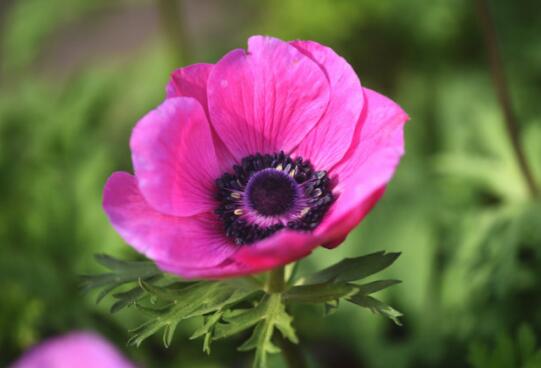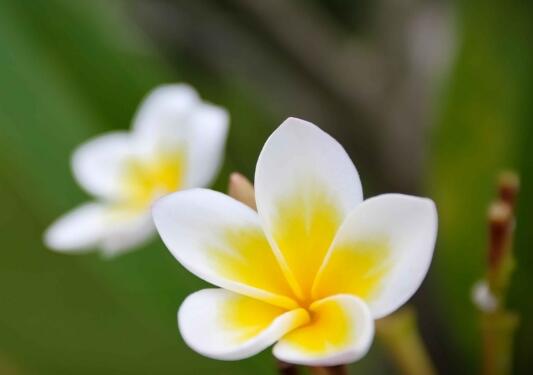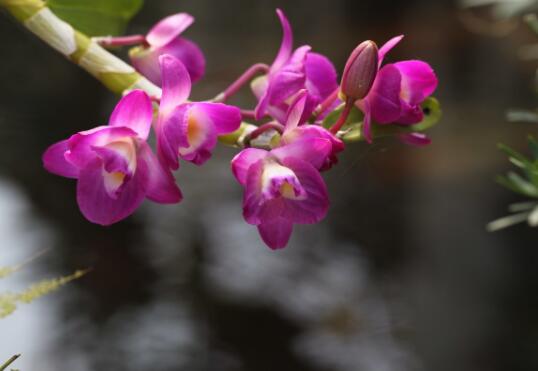Is anemone poisonous? can anemone be cultured indoors / non-toxic can be raised indoors
Anemone is a common flower plant in people's life, which has a high ornamental value. Because of this, many people want to raise one at home, but many plants on the market today are toxic, so before breeding, this point should be clarified. Is Anemone poisonous? Can Anemone be cultured indoors? The following small series takes everyone to understand.
1. Is Anemone poisonous or not?

The answer to this question is no, this plant itself is not toxic, and not only that, it also has a high medicinal value, for many diseases have a good therapeutic effect, as for its specific medicinal details in the efficacy and role of Anemone article has a detailed introduction, interested friends can understand.
2. Can Anemone be cultured indoors?
Anemone this plant is very suitable for breeding indoors, and will be raised indoors has many benefits, such as beautifying the indoor environment, improve the home feng shui, etc., but this plant is more like light, so it is best to raise it in the indoor windowsill, so that it can receive light, so as to grow better.
3. The benefits of keeping anemones indoors
1. Beautify the indoor environment
Anemone is a flower plant with high ornamental value. The shape of this plant is beautiful, the color is various, and each color has its own unique beauty. Therefore, it has also been loved by many people. If we cultivate it at home, it will have a very good beautification effect on the indoor environment.
2. purify indoor air
In today's market many plants have the ability to purify the air, anemone is also one of them, this plant can absorb most of the harmful substances in the air, but also can release oxygen, so that the surrounding air becomes more fresh, if we raise a anemone at home, then for people's health will also have a certain guarantee.
3. Improve your home's feng shui
In Feng Shui, anemone is also a kind of plant with good meaning. Raising this plant at home can improve Feng Shui at home, but the specific location is still particular. If we put it in the living room or dining room, there is an implied meaning, which can make the family get along harmoniously and smoothly. If it is placed in the bedroom, it also represents that the husband and wife can love each other.
How to raise Anemone, Anemone cultivation methods and precautions/frequent fertilization
Anemone is the national flower of Israel, an Asian country. It is greatly sought after locally and can often be seen in all parts of our country. However, it is not easy to raise it well. There are many places to pay attention to. How about Anemone? What are the breeding methods and precautions of Anemone? The following small series takes everyone to understand.
1. How to raise anemones and understand their habits
Want to know how to raise anemone, first of all we have to understand the growth habits of this plant, it likes cool, moist, sunny environment, more cold-resistant, avoid high temperature and humidity, so in summer we must keep the environment ventilated, and often spray water to the plant, once to reduce the surrounding temperature.
II. Cultivation methods and precautions of anemone
1. humus soil
Before we cultivate anemone, we first need to choose soil. In this respect, it is best to choose loose and fertile humus soil. This soil is rich in nutrients, and its drainage and permeability are better, so that plants can absorb nutrients better, and it is not easy to have ponding in the basin soil.
2. Temperature, 15℃-35℃
Temperature management is also a point we need to pay attention to in the process of breeding anemone, because only when the plant grows at the right temperature, it will grow better. Its suitable temperature is between 15 ° C and 35 ° C, and the temperature in winter needs to be no less than 10 ° C, so that it can safely overwinter. If the temperature is too low, it is not conducive to plant growth.
3. Fertilization, once a half month
Fertilizer is one of the main nutrients in the growth process of anemone, especially after entering the growth period, its demand for fertilizer is very high, basically every half month we have to fertilize it, and during flowering, in order to promote the formation of flower buds, we also need to fertilize it once a week.
4. Water, avoid accumulated water
Anemone this kind of plant likes warm and humid environment, so we should water frequently when breeding, keep the soil has a certain humidity, so it will grow better, but we still have to pay attention to the amount of watering control, this kind of plant is not resistant to waterlogging, so it is best not to cause ponding, otherwise it is easy to let its roots rot.
5. Light, avoid strong light
Anemone this kind of plant likes light, but does not tolerate strong light, if in spring and autumn, the light is more suitable, we can cultivate it outdoors, so that it can also better carry out photosynthesis, and after entering the summer, the sun will be more intense, we need to its appropriate shade, especially at noon, it is best to move to indoor semi-shade cultivation, so as not to burn the plant.
6. Pest control, drug control
In the process of breeding anemone, if we are not careful enough, it is easy for pests and diseases to enter, this kind of problem is very harmful to plants, so we must deal with it in time when we find it. Generally, the most direct and effective way to deal with pests and diseases is to carry out drug control, but the chemicals used for each pest and disease are different. The specific details are introduced in the common pests and diseases of anemone and their prevention. You can find out about it.
How to raise Anemone? Anemone breeding methods and precautions
Anemone, also known as Anemone, Anemone, etc., is a perennial herb belonging to Anemone genus of Ranunculaceae. Anemone flowers are gorgeous, colorful or elegant or charming, and have high ornamental value, so they are often potted in indoor courtyards. So, how do you raise anemones? The breeding methods and precautions of anemone are described as follows.
Photo: Anemone
1. The cultivation method of anemone
1. Pot soil selection: breeding anemone, you can choose mixed pot soil, garden soil, rotten leaf soil and plant ash according to a certain proportion, and add some base fertilizer, requiring good drainage.
2. Light and temperature: Anemone cultivation needs to meet the two conditions of cool and sufficient light. Anemone can be cold-resistant, but avoid high temperature, suitable temperature for growth between 15℃--35℃, winter temperature needs not less than 10℃, can be safe winter, can be put into indoor sunny places, conditional can be placed in greenhouse maintenance.
3. Watering and fertilization: breeding anemone, need to keep the soil moist, but watering should be careful not to make the pot soil too wet, so as not to rot the roots. The trumpet of winter moisture is less, so watering can be reduced. In rainy seasons, anemones need to be placed in dry places for maintenance. Pay attention to shelter from rain and stop watering. Fertilization is generally applied once every half month thin fertilizer, in flowering period, in order to promote flower bud formation, can be applied once a week.
4. Propagation method: Anemone propagation is mainly sowing and sub-ball, sowing is autumn sowing, seeds with the harvest with the sowing. Bulb division propagation is mainly about the division of Anemone seed bulb planting.
Photo: Anemone
2. Precautions for Anemone cultivation
1. Pests and diseases: Anemone will have pests and diseases, mainly rot disease, blight, gray mold, powdery mildew, etc., the harm is more serious, need timely control, pests are mainly aphids and cutworms, can use commonly used pesticides spray kill.
2. Seed collection: Anemone can be sown, usually with the seeds collected with sowing. The seeds must be harvested in time, otherwise they will be blown off by the wind. The harvested seeds should be maintained in a ventilated and dry place.
Anemone likes a cool, humid and sunny environment, which is cold-resistant but avoids high temperature and humidity, and needs special attention during maintenance. The above introduces the cultivation methods and precautions of Anemone, hoping to help everyone!
- Prev

What is the problem of egg blossom growing insects? disease and pest control of egg flower / 3 insect pests 1 disease
Egg flower is a kind of common flower in people's life, which is highly ornamental, but for this kind of ornamental flower, the most feared problem is diseases and insect pests. Such problems not only affect beauty, but also lead to plant death if left untreated for a long time.
- Next

Is Dendrobium poisonous? is Dendrobium suitable for growing indoors / non-toxic can be raised indoors?
Dendrobium is a kind of flower plant of the order Neoptera, which is highly ornamental, and because of this, many people want to keep one at home, but now many plants on the market are toxic to a certain extent, so we need to be clear about this before breeding. Is Dendrobium poisonous?
Related
- Fuxing push coffee new agricultural production and marketing class: lack of small-scale processing plants
- Jujube rice field leisure farm deep ploughing Yilan for five years to create a space for organic food and play
- Nongyu Farm-A trial of organic papaya for brave women with advanced technology
- Four points for attention in the prevention and control of diseases and insect pests of edible fungi
- How to add nutrient solution to Edible Fungi
- Is there any good way to control edible fungus mites?
- Open Inoculation Technology of Edible Fungi
- Is there any clever way to use fertilizer for edible fungus in winter?
- What agents are used to kill the pathogens of edible fungi in the mushroom shed?
- Rapid drying of Edible Fungi

